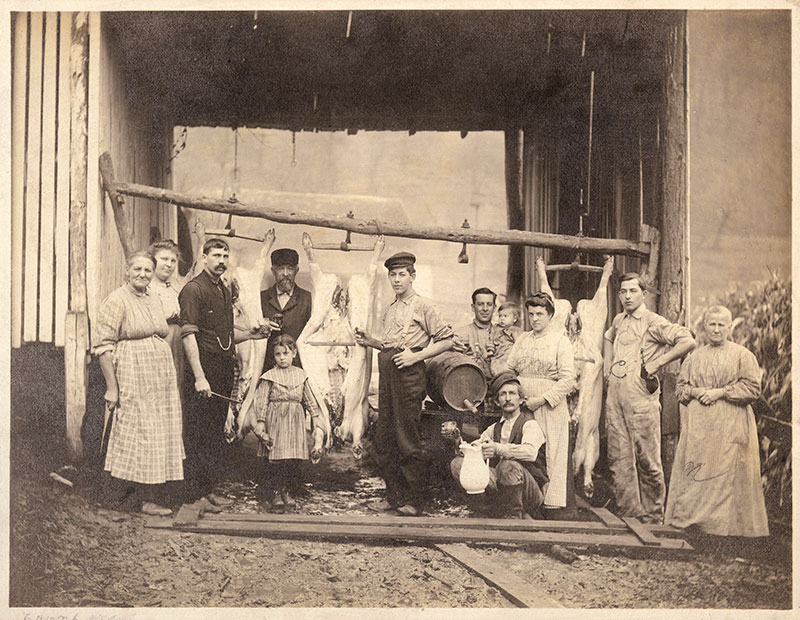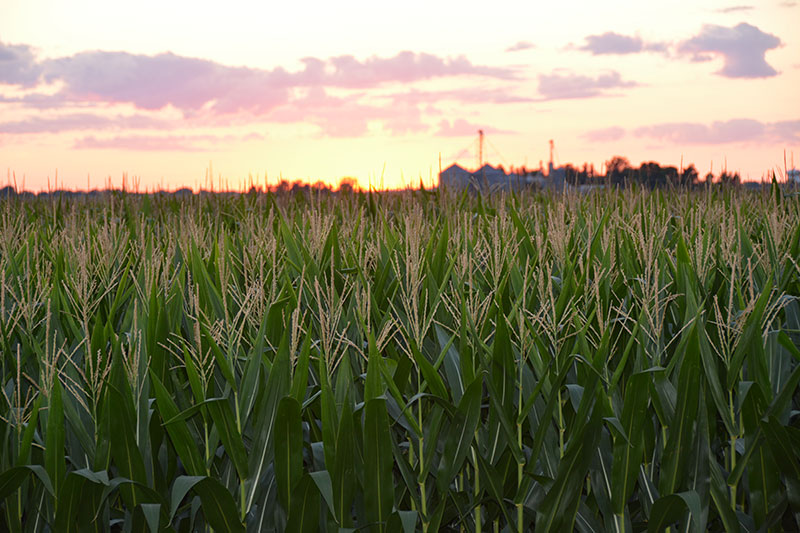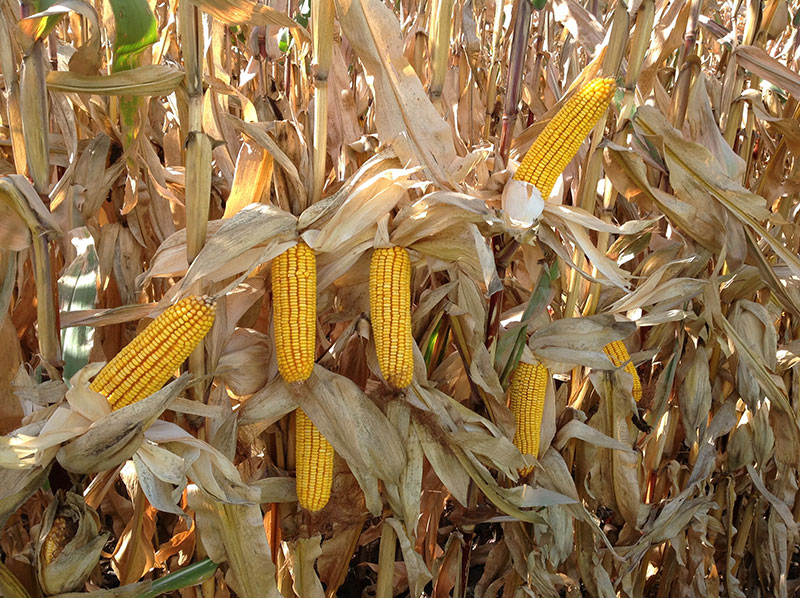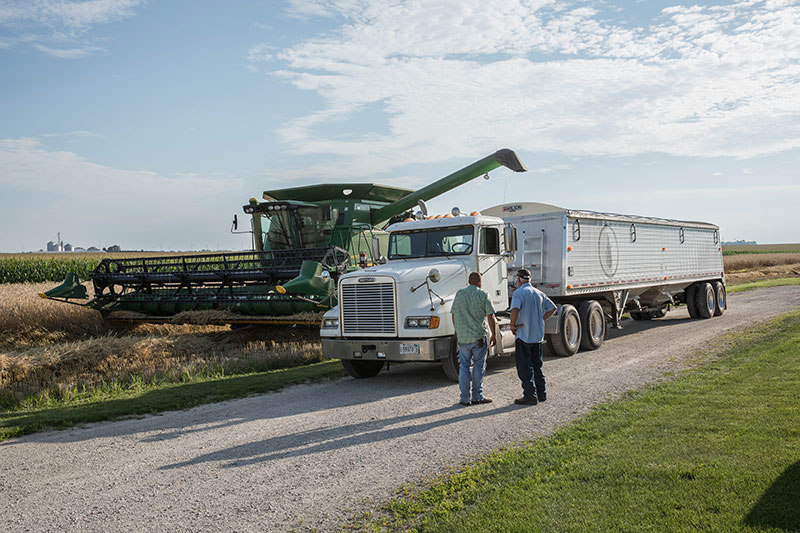 The Walter family’s long and interesting farming history dates back to the late 19th century. Originally settled in Portsmouth, Ohio, the first family farmers were adept at both farming crops and distilling whiskey. So, one could say that 5th generation farmer Jamie Walter is just carrying on his family’s tradition.
The Walter family’s long and interesting farming history dates back to the late 19th century. Originally settled in Portsmouth, Ohio, the first family farmers were adept at both farming crops and distilling whiskey. So, one could say that 5th generation farmer Jamie Walter is just carrying on his family’s tradition.
The Walter Farm
Jamie Walter and his father Jim farm 2,000 acres in DeKalb, Ill., where they grow mostly corn, but also soybeans, winter wheat, rye and barley. Jim is in his 50th crop year while Jamie is in his 20th year. It’s not just experience that sets Jim apart from other farmers, it’s also that he received the 2006 Prairie Farmer’s Master Farmer Award for his outstanding agricultural production skills and off-the-farm work improving the community, schools, industry and more.
 Although Jim has always farmed, Jamie’s path to the combine took a more circuitous route. After college, Jamie became an agricultural lawyer. But, the pull of the farming tradition and a disillusionment with law lead him back to his crop roots. Here is where Jamie’s business acumen and farming knowledge combined.
Although Jim has always farmed, Jamie’s path to the combine took a more circuitous route. After college, Jamie became an agricultural lawyer. But, the pull of the farming tradition and a disillusionment with law lead him back to his crop roots. Here is where Jamie’s business acumen and farming knowledge combined.
“I know the boom and bust farming cycle,” Jamie said. “I did a SWOT analysis (Strengths, Weakness, Opportunities, and Threats) and determined we needed to diversify.” The boom cycle allowed the Walters to begin a seed growing and selling business where they became producers of specialty grains. The biotechnology knowledge he acquired came in handy when the Walters continued their expansion ideas.
 “I knew we had to do more with less,” Jamie said. And, as he looked at his farming business and how they produced mainly commodity crops, “I knew we had to add value as a consumer product.” That’s when he came to a decision one night with a glass of bourbon in his hand: a distillery.
“I knew we had to do more with less,” Jamie said. And, as he looked at his farming business and how they produced mainly commodity crops, “I knew we had to add value as a consumer product.” That’s when he came to a decision one night with a glass of bourbon in his hand: a distillery.
A Spirit Lesson: All Bourbon is Whiskey But Not All Whiskey is Bourbon
U.S. regulations set manufacturing standards for bourbon. They are:
- The spirit must contain a grain mixture of at least 51 percent corn
- Must be distilled to no more than 80 percent alcohol by volume
- Must be aged in new oak barrels charred on the inside
If the product does not meet these standards, then it can be called whiskey and not bourbon.
Most whiskeys and bourbons produced in the United States come from six large production facilities in Kentucky. (Although Kentucky is marketed as the birthplace of whiskey, prior to the beginning of Prohibition in 1920, Peoria, Ill., boasted more than 70 distilleries and made more whiskey than any other U.S. location.)
In these mass manufacturing facilities, large truck- or train-loads of corn grown from a variety of farms using various seed sources come together in production to distill the various spirits. Jamie likens the process to jug red wine, “With so many red grape varieties (in jug red wine), you lose the individual characteristic of each grape,” he said.
From Grain to Glass an Estate Distillery is Born
 Five years ago, Jamie and Jim decided to turn five percent of the corn grown on Walter Farms into consumer products: whiskey, bourbon and vodka. They also brought on business partner Nick Nagel, who has a farming and marketing background.
Five years ago, Jamie and Jim decided to turn five percent of the corn grown on Walter Farms into consumer products: whiskey, bourbon and vodka. They also brought on business partner Nick Nagel, who has a farming and marketing background.
However, distilling spirits is not like making wine or beer at home. “It’s a felony to make a single drop of whiskey without permits. We needed to learn how to do this,” Jamie explained. To begin the new business endeavor, Whiskey Acres Distilling Company, Jamie hired a spirits consultant. That’s when former Maker’s Mark Master Distiller Dave Pickerell came on board. Pickerell and Jamie wanted to prove that corn variety, soil type and climate matters in distilling whiskey.
“We are a soup to nuts production,” said Jamie. Once the grains are grown and harvested from the fields, they are stored onsite in individual bins and silos to keep varieties separate. From there, the grains are milled just prior to the distillation process. Jamie used a ground coffee analogy, “The grains are milled just in time. It’s like fresh coffee grounds make a more flavorful and robust cup of coffee,” he said. Distillation occurs on the premises and then the spirits are transferred to aging barrels also located on the farm. It takes between four and five years to age a standard 53-gallon barrel. “From the seed into the ground to the spirt out of the bottle, we touch every step and it’s entirely in house,” Jamie explained.
 In five years, they have ramped up production to an estimated 80,000 to 100,000 bottles. However, in order to generate cash flow in the beginning, Jamie and Pickerell decided to fill 15- and 25-gallon barrels as they age quicker. Fifteen-gallon barrels usually age in 18 to 24 months while 25-gallon barrels age in 24 to 36 months. The consumer response so far has been excellent and the spirits have earned awards at various American and World spirit competitions. In 2018, Whiskey Advocate presented Jamie, Jim and Nagel a 2018 Visionary Award.
In five years, they have ramped up production to an estimated 80,000 to 100,000 bottles. However, in order to generate cash flow in the beginning, Jamie and Pickerell decided to fill 15- and 25-gallon barrels as they age quicker. Fifteen-gallon barrels usually age in 18 to 24 months while 25-gallon barrels age in 24 to 36 months. The consumer response so far has been excellent and the spirits have earned awards at various American and World spirit competitions. In 2018, Whiskey Advocate presented Jamie, Jim and Nagel a 2018 Visionary Award.
Jamie attributes much of their early success to Pickerell. “We had the good fortune to work with Jim. We owe our current success to him,” Jamie said. Whiskey Acres now comprises 24 employees on the team. “There are maybe 2,000 craft distillers in the U.S.,” Jamie said. “But true farm-to-distillery operations, there are less than 20 and even fewer who do it all in house.”
Technology and Sustainability Play a Role in Farming and Distilling Success
 Farming has changed a great deal from the tractors that pulled Jamie’s great, great grandfather’s plow through the Ohio earth. Today, combines are mechanically driven by GPS systems that seed fields with up to a quarter-inch overlap in the seeding lines. Drones equipped with infrared cameras fly over cornfields and read the amount of photosynthesis taking place, which allows the farmer to know if an area needs repair.
Farming has changed a great deal from the tractors that pulled Jamie’s great, great grandfather’s plow through the Ohio earth. Today, combines are mechanically driven by GPS systems that seed fields with up to a quarter-inch overlap in the seeding lines. Drones equipped with infrared cameras fly over cornfields and read the amount of photosynthesis taking place, which allows the farmer to know if an area needs repair.
“We take our responsibility to sustainability very seriously,” Jamie said. And, technology helps both the farm and distillery operate efficiently and with a negative carbon footprint, according to Jamie.
The Walter farm and distillery use water from a limestone aquifer under the cornfields. In the distilling process, water that cools the large distilling vats is recycled which resulted in a 90 percent decline in water consumption. The Walters additionally installed solar panels that power 100 percent of the farm and distillery.
Waste from the distillery is completely used from “head to tail,” according to Jamie. The distilling process creates byproducts like methanol, which they donate to the local government to make a salt brine for winter roads. The byproducts of oil and water are spread over the cornfields to provide crop nutrients. And, the left-over distiller grain is high in protein and Whiskey Acres gives it to the neighboring cattle farm. That farm, in turn, provides home-grown beef to the business to sell in its Visitor Center.
And, as many people know, growing plants are a natural carbon sink (or carbon storage) as carbon is a required raw material for photosynthesis. However, what many people do not know, is that there are so many growing crops in America’s corn belt (where the Walter Farm is located) that during the height of the summer growing season, the area is more efficient at storing carbon than the Amazon Rain Forest during that same time, according to Jamie.
From seed to spirit, the Walters employ experience, technology, business skills and environmental awareness to grow corn and make whiskey that follows in their family’s tradition.
Photos courtesy of Whiskey Acres Distilling Company
